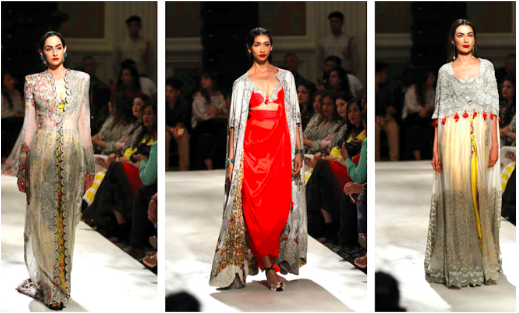Indo-Western Fashion: Where East Meets West
Indian fashion has been shaped by the West for as long as one can remember— from its trade and cultural exchanges with France and Greece in the 13th and 14th centuries, to the arrival of Vasco Da Gama from Portugal in the 15th century, and finally to its colonization by the British in the 16th century. Throughout history, Indians have had to adapt the way they thought, acted, and dressed to the norms of their Western superiors.
The early influencers, especially the British, left an indelible imprint on Indian fashion— one that’s evident even today. Apart from assimilating western fashion as the daily attire of many Indians, the British also made their way into redefining traditional Indian clothing. A new category of clothing, one that saw the coalescence of Indian and western fashion, where ornate sarees intermingled with chique jackets and dhotis (traditional loose pants worn by men) were paired with crisp suits. While this realm of Indian fashion has been expanding ever since India gained independence in 1947, it has never been as prominent as it is today. With the rapid pace of globalization, Indians are exposed and often tantalized by western cultures more than ever, and shapers of art and culture recognize this— the westward trajectory of Bollywood is also a case in point.
One of the main shifts in Indian fashion, driven by early westernization and accelerated by recent globalization, is maximalism to minimalism. At one point, ornate bridal wear and alluring Bollywood couture were regarded as the focal points of the Indian apparel industry. While these are still predominant, western-inspired casual attire and loungewear are slowly entering center-stage; this had ramifications on the overarching aesthetic of Indian fashion— both formal and casual attire are now tending towards minimalism and simplicity, gearing focus towards the more ‘abstract’ elements of the art of fashion— shape, form and fit. This is seen evidently in the designs of Anamika Khanna— one of the most influential designers in India. Combining subtlety and extravagance, she brings out the best from both Indian and western couture in her designs, each of which evoke the narrative of westernization. Loose trousers paired with dupattas (shawls), shirts worn under sarees and capes worn with lehengas, are some of her trademarks, and resemble a graceful and harmonious intermingling of two aesthetics that seem immiscible.
Her designs were largely popularized by Bollywood actress and one of India’s fashion icons, Sonam Kapoor, who became an unofficial brand ambassador for Anamika Khanna, wearing her designs to the most celebrated events in India. She also wore one of her iconic designs (pictured below) to Cannes Film Festival 2014, and introduced the brand to an acclaimed, global platform. The storm of appreciation that flowed in for this design revealed that the mélange in Anamika’s creations garnered fame in both her home country and abroad.
Other Indian designers took note of this, and followed suit. Manish Malhotra, Sabyasaachi Mukherjee and many of the frontrunners of Indian fashion design incorporated western modernism and minimalism into their designs, and continue to do so even today.
Eventually, this trend became preeminent within the Indian community worldwide, and resultantly within the global artistic community of fashion designers. Since 2010, Elie Saab, Hermes, Chanel and Alexander McQueen have been churning out their Indian-inspired collections. Lord & Taylor launched a global promotional campaign called ‘Into India’, as a part of which they dedicated 20 of their Fifth Avenue windows to showcase designs by Indian designers such as Tarun Tahiliani and Rina Dhaka. Gaultier hired Indian designer Ramesh Nair as his Creative Director, and Hermes made South-Indian model Lakshmi Menon the new face of their brand. The list continues on. The point is that both styles are coming together, and their popularity all over the world means that they are coming together fast.
Even in our very own city of Chicago, Indo-western fashion is making its mark. Studio East6, and designer Azeeza Desai Khan are seeing an increasing number of clients, both Indian and American, visit their stores repeatedly. They were even recognized on revered media platforms such as The Wall Street Journal.
In this way, Indian fashion all over the world has come to showcase the contours of Western simplicity and abstraction, while still retaining the authenticity, intricacy and elegant extravagance of traditional Indian couture. It is here, in this new domain of fashion, where East meets West.






